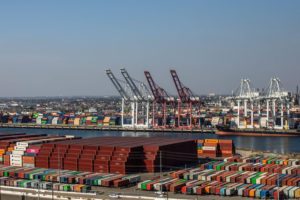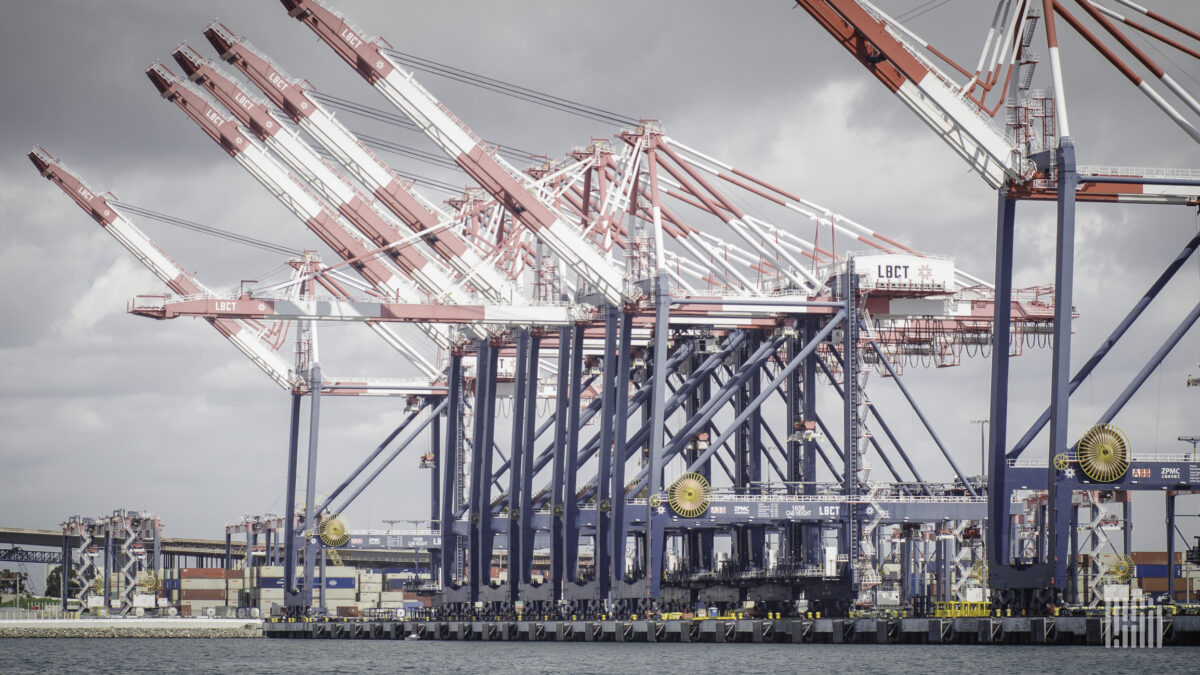[ad_1]

The global trade compliance market is one crazy market. The market grew by double digits year over year, yet there is no standard user and consequently there is no common understanding of what the end-to-end global trade compliance process should be.
Linda McKee, the director for global trade services management at SAP, expressed the idea this way, “I don’t think we currently have any real standard global trade scenarios. Every customer seems to want to manage them differently.”
The Finance Department
Tariffs are a form of taxes. At some companies the trade department rolls up to finance. Thomson Reuters purchased the global trade compliance vendor Integration Point in 2018. They offer a solution for corporate tax departments called ONESOURCE. The Integration Point solution was rebranded to be one of the modules in the ONESOURCE suite. Avalara approaches the market in a similar way, they offer a variety of solutions for the tax department including GTC.
Many multinationals have engineered their global supply chains to minimize taxation by creating subsidiaries in low taxation nations like Switzerland, Ireland, and Singapore. That approach to taxation engineering is less potent than it used to be. In July of 2021, 130 countries backed a plan to set a global minimum corporate tax rate of 15 per cent. Nevertheless, the argument that trade compliance is complementary to a company’s overall tax strategy certainly makes sense to many companies.
In many companies, the legal department also rolls up to finance. Ms. McKee says that at SAP what she is seeing is a trend towards having more deals originating from a supply chain organization, SAP’s customers still typically originate from finance. At SAP their solution is developed by their governance risk and compliance team. Global trade services is one of 4 pillars of GRC at SAP, the others being enterprise risk and compliance, identity and access governance, and cybersecurity.
There can be big fines for noncompliance with trade regulations. In April of 2022, British American Tobacco, headquartered in the UK, agreed to pay $508 million in fines for selling their products to North Korea. This action was brought by the Office of Foreign Assets Control which is an enforcement agency of the U.S. Treasury Department. This April, the US Department of Commerce’s Bureau of Industry and Security imposed a $300 million civil penalty against Seagate Technology for selling hard disk drives to Huawei Technologies in violation of the foreign direct product rule.
When it comes to fines, there are two classes of fines. One class of penalties comes from trading with bad actors – sanctioned nations, companies, and individuals. The large fines above are examples of this class of penalties. The other types of penalties involve not paying a high enough duty by not using the proper Harmonized System commodity classification.
The Harmonized System is a commodity description and coding system, which forms the basis upon which all goods are identified for customs. It is used by customs authorities worldwide. Using the right HS code allows companies to pay the correct tariffs.
In truth, properly classifying products for trade purposes can be difficult. The problem, Randy Rotchin, the director of cross border government solutions at Avalara, points out “is that there is an incredible gap between how products are described commercially by trade and how they are expressed in the national customs tariff schedules.” Worse, every country or trading bloc has its own taxonomy beyond the internationally, standardized first 6-digits. This has resulted in error rates of up to 30%. Even government experts frequently disagree on what the classification of a particular product should be. For this reason, in the US there is a good deal of lenience before fines are paid because of improper classification. If a company agrees to put in a GTS system and improves their processes the fine is waived. Other nations are less forgiving. Mr. Barraco points to the European Union as being much less lenient.
The fines for not properly classifying products are much, much smaller than the fines associated with trading with restricted parties. But even here, Mr. Barraco explains, there is a difference between accidentally shipping goods to bad actors and “intentional violators.” It is when a company is an intentional violator that “they’re really going to slap the handcuffs on you.”
In terms of developing a business case for implementing GTC, compliance is a hard sell. Every company knows a fine is possible, but is the probability of a fine 1% over the next five years? Or is it 30% in the next two years? And how large would the fine be? Because these questions are difficult or even impossible to answer, a good return on investment estimate can’t be developed.
The Supply Chain Function
The argument for having the global trade department report to the supply chain function is threefold. First, even if fines are not applied, goods moving across borders with incorrect documentation can be held up at the border. This results in detention costs and delays in producing goods and delivering them to customers. Companies who have experienced these delays often add inventory across their network to buffer the risk. This adversely affects a company’s cash flow.
Jerry Peck, the vice president of product strategy for global trade and transportation execution at QAD, made the point that better systems at customs agencies are leading to increases in cycle times for companies that are not on top of the complex documentation requirements associated with trade.
For example, the U.S. Treasury’s Office of Foreign Assets Control 50 Percent Rule imposes sanctions on companies with combined ownership by “blocked” parties of 50 percent or more. OFAC recommends “caution” in dealing with companies in which one or more sanctioned entities hold large stakes that are less than 50 percent. So, a “bad actor” might own 49% of a company that is exporting goods. While that company is not on a restricted party list, the products from that company would be much more likely to be held up at customs and subject to additional inspections. QAD has created import “admissibility flags” that fire up in the import system and let a customer know that a particular imported product is one that customs has targeted for review.
Secondly, one core supply chain application is a transportation management system. A TMS helps companies move freight from origin to destination efficiently, reliably, and cost-effectively. When goods originate in one country and flow across borders, that end-to-end process should include global trade functionality. Oracle’s solution combines TMS and GTC seamlessly. It is the same database, code base, and user interface – in short, it is truly one application.
Finally, in making sourcing decisions, global trade compliance needs to be part of companies strategic sourcing programs. For example, it can look like imports from China are cheaper than the same goods imported from Mexico if a company is not relying on analysis produced by an advanced global trade system. Goods that look like they are 25% cheaper, may be 6% more expensive once special tariffs and international freight costs are factored in. It is important to know the total landed cost inclusive of transportation and tariff costs.
There are GTC engines, MIC and SAP lead here, that allow companies to decompose their bills of materials and understand whether importing a particular component from a company in a different nation, say Mexico rather than China, will allow for a significantly lower landed cost. No other GTC functionality has a better return on investment than these tariff scenario engines. This type of analysis is standard operating procedure in the Auto industry; other industries have been too slow to adopt this advanced functionality.
Industry Specific Solutions
WiseTech’s product suite is specifically designed for logistics service providers including freight forwarders and customs brokers. Virtually all their GTC clients come from this vertical. Rather than using manual processes, or an advanced trade compliance application, many importers and exporters rely on freight forwarders or customs brokers for trade compliance. The downside of using a freight forwarder is that if the forwarder makes a mistake, the importer of record is still responsible for the fines.
The other industry specific solution is Oracle’s solution for aerospace & defense. Across all enterprise applications there has been a move to Cloud solutions because of a lower total cost of ownership and the ease of receiving new functionality. But Derek Gittoes, Oracle’s vice president for SCM product strategy, made the point that governments have very stringent standards on what kind of data from A&D companies can go into a cloud. Dan Schoerner, the lead product manager for Oracle’s TMS/GTC product, added that there are over 900 requirements to adhere to just to be FedRAMP authorized at just a moderate level of security classification. The Federal Risk and Authorization Management Program is a United States federal government-wide compliance program that provides a standardized approach to security assessment, authorization, and continuous monitoring for cloud products and services.
Global trade compliance does not require the same level of security as product development, so A&D companies are allowed to run at the moderate level of security for trade compliance. Mr. Schoerner added, even beyond the A&D industry, “that is what most business enterprise applications need to be running on.”
But the Market Grows Rapidly Anyway
Despite the confusing array of customers, and the difficulty of providing a standard approach to trade compliance issues, double digit growth is being fueled by new types of customers buying trade compliance software. Jackson Wood, the director of industry strategy for global trade intelligence at Descartes, said new “nontraditional organizations are in the global trade space.” This includes financial services companies, software companies, field services, and professional services firms. These are “organizations that don’t necessarily move physical commodities across international borders. But they are starting to feel the effects of various regulatory regimes from not only the United States but other international jurisdictions.” In particular, there’s a number of “supply chain and third-party transparency regulatory programs that are being implemented in Europe and other countries around the world.”
Lewis Carrol has been quoted as saying, “I’m not strange, weird, off, nor crazy. My reality is just different from yours.” What makes the global trade compliance software market so odd is that because companies approach the GTC problem so differently, there are so many different realities.
[ad_2]
Source link












